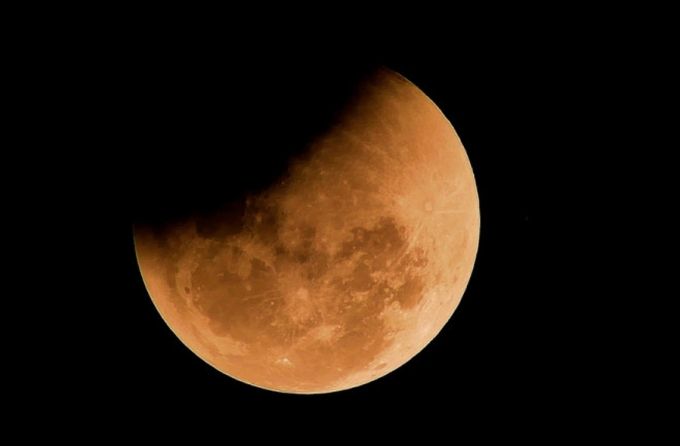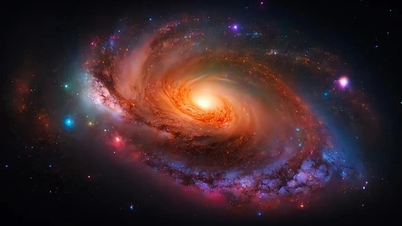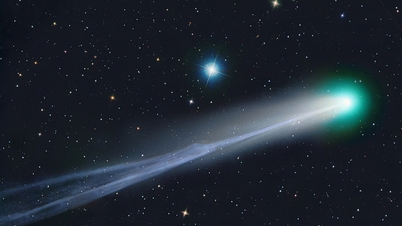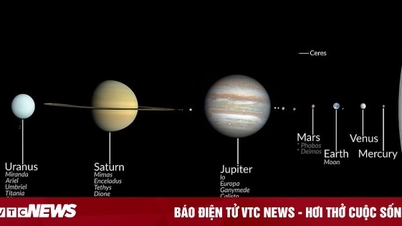Early morning on October 29, astronomy lovers will have the opportunity to observe a partial lunar eclipse, a phenomenon lasting more than 1 hour that turns the Moon a deep red color.
The phenomenon will be observed across the entire territory of Vietnam, although the coverage will be low, just over 12% at its maximum. The eclipse will begin at 2:35 am and end at 3:52 am on October 29 ( Hanoi time), with a peak at 3:14 am. The phenomenon will end more than an hour later.
Mr. Dang Vu Tuan Son, Chairman of the Vietnam Astronomy and Cosmology Association (VACA), said that in the early morning of October 29, a part of the Moon will enter the Earth's shadow, becoming darker and appearing red. The area that completely enters this shadow accounts for about 12% of the Moon's bright disk and will be dark red. The remaining area is a penumbral lunar eclipse, so it will be a lighter red.

A partial lunar eclipse does not cast a shadow over the entire Moon. Photo: Chattaphan Sakulthong/Shutterstock .
He said that observers do not need any protective equipment because lunar eclipses do not pose the same risk to eyes as solar eclipses. The phenomenon can be observed completely with the naked eye, as long as the sky is clear enough to see the Moon. "However, a small telescope or binoculars will make observing more interesting," he suggested.
A partial lunar eclipse occurs when the Moon passes through a portion of the Earth's shadow (called the penumbra) and only a portion of the Moon passes through the darkest part (called the umbra). This is the second lunar eclipse this year, following a penumbral lunar eclipse in May, and will be visible across Europe, Asia, Africa and western Australia.
According to NASA, partial lunar eclipses may not be as spectacular as total lunar eclipses, when the Moon is completely covered by the Earth's shadow, but they happen more frequently. "This means there are more opportunities to observe small changes in the solar system happening right before your eyes," NASA shared. In Vietnam, astronomy enthusiasts will not have the opportunity to observe the next lunar eclipse until September 2025.
Nhu Quynh
Source link



![[Photo] Prime Minister Pham Minh Chinh meets with representatives of outstanding teachers](https://vphoto.vietnam.vn/thumb/1200x675/vietnam/resource/IMAGE/2025/11/15/1763215934276_dsc-0578-jpg.webp)
![[Photo] General Secretary To Lam receives Vice President of Luxshare-ICT Group (China)](https://vphoto.vietnam.vn/thumb/1200x675/vietnam/resource/IMAGE/2025/11/15/1763211137119_a1-bnd-7809-8939-jpg.webp)










































































































Comment (0)